Giorgio Agugiaro
Projects
Here are listed some projects I am involved in or I have contributed to in the past years. Some ancillary details, as well as my role in the project, are given - when available.
Last update: January 2025.

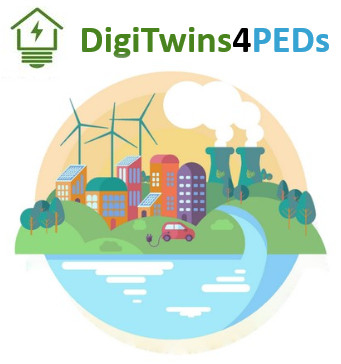

Utilization of Urban Digital Twins to co-create flexible positive energy districts
Duration: 2023-2026
Synopsis: The main concept of the DigiTwins4PEDs project is to use Urban Digital Twins as a digital representation of the real world, opening up a wide range of possibilities for modeling the energy aspects of cities. This innovative approach aims to create a platform for residents and stakeholders to exchange information, enabling them to visualize various PED scenarios before their actual implementation.
Partners: Hochschule für Technik Stuttgart (Germany), Wroclaw University of Environmental and Life Sciences (Poland), TU Delft (Netherlands), Austrian Institute of Technology (Austria), BOKU - University of Natural Resources and Life Sciences (Austria), InfoSolutions (Poland), Municipality of Stuttgart (Germany), Municipality of Wroclaw (Poland), Municipality of Rotterdam (Netherlands), Municipality of Vienna (Austria).
Funding: DUT Driving Urban Transition Call 2022. FFG Austrian Research Promotion Agency (Austria), BMBF German Federal Ministry of Education and Research (Germany), NCBR The National Centre for Research and Development (Poland), Dutch Research Council (NWO), Co-funded by the European Union.
(My) role in the project: Project leader (in the NL), Work Package Leader (WP4 “Integration of Urban Digital Twin into the co-creation process for different case studies"). Data modelling, support to the Dutch case study.
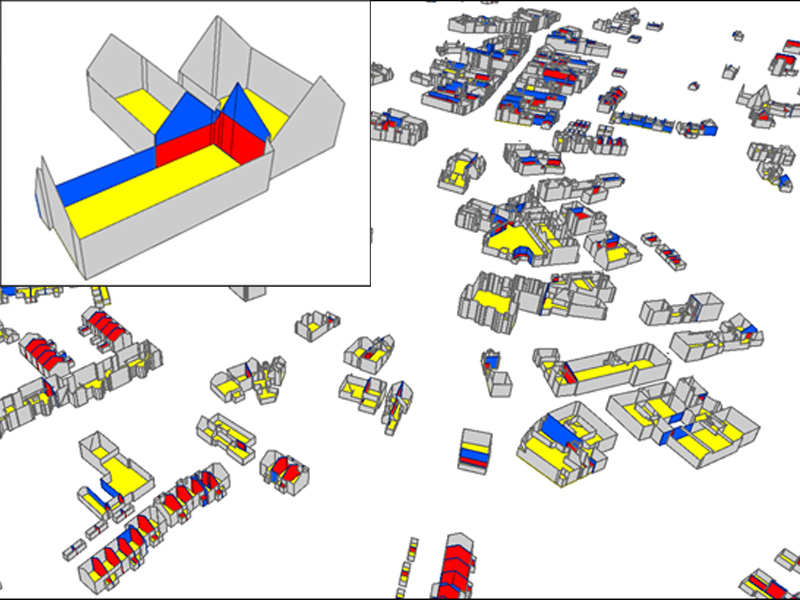
Party walls & 3D BAG
Investigation on feasibility and implementation of algorithms to compute party walls from the 3D BAG
Duration: 2023
Synopsis: Goal of the project is to evaluate pros and cons of existing algorithms (e.g. their requirements, their accuracy, and their performance), to compute party walls from LoD2 buildings in the 3D BAG, and to define a strategy to implement such a process that can be embedded in the current pipeline to generate and update the 3D BAG on a regular basis.
Partners: 3DGI, Rijksdienst voor Ondernemend Nederland (RVO).
Funding: RVO.
(My) role in the project: Co-investigator (e.g. comparison and quality assessment of the methods, dissemination, etc.)
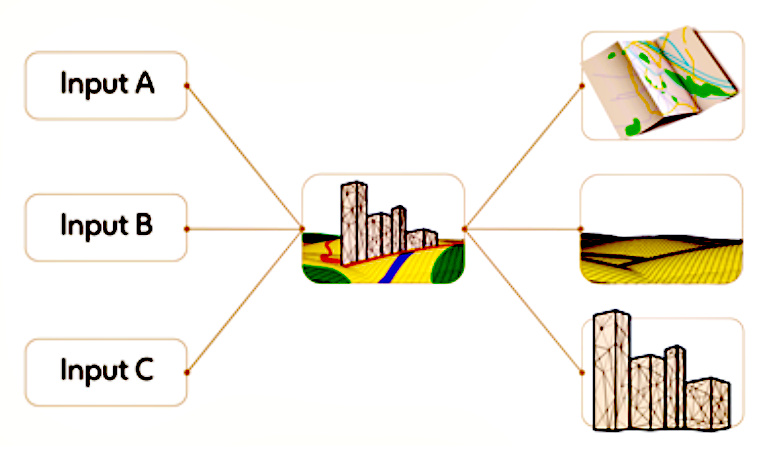
Digitaler geoZwilling der Stadt Wien
Development of a CityGML-based ADE for the Municipality of Vienna
Duration: 2021-2022
Synopsis: Goal of the project is to test whether and how far the CityGML standard can be adopted by the Municipality of Vienna in the context of their “Digitaler geoZwilling” (Digital geoTwin) vision. Part of the project is dedicated to mapping existing and currently in development Viennese datasets to the CityGML data model, and to develop a “Digitaler geoZwilling ADE” (Application Domain Extension) to accommodate particular, domain-specific needs of the Municipality of Vienna.
Partners: Municipality of Vienna, Department of Surveying and 3D city modelling (MA41), Austria.
Funding: Municipality of Vienna.
(My) role in the project: Principal investigator, data analysis, mapping, ADE conceptual design and implementation. Training of the Viennese staff.
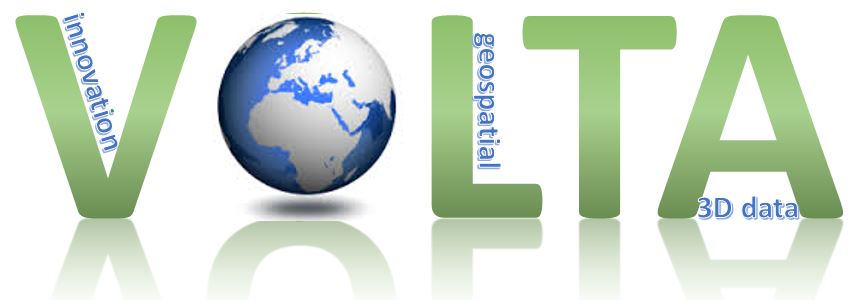

innoVation in geOspatiaL and 3D daTA
Duration: 2017-2022
Synopsis: The VOLTA project is an EU Marie Skłodowska-Curie RISE (Research and Innovation Staff Exchange) project related to Geodata, Geomatics and Geoinformatics. The project will feature secondments, training activities and networking to facilitate knowledge exchange and career progresses in the geospatial field. The project will develop innovative solutions to (i) automatically provide metric information from images, (ii) fuse heterogeneous data coming from various sensors, (iii) segment 2D and 3D geospatial data and (iv) process large geospatial datasets in the Cloud.
Partners: Fondazione Bruno Kessler (Italy), Gottfried Wilhelm Leibniz Universitaet Hannover (Germany), TU Wien (Austria), Uniwersytet Warszawski (Poland), TU Delft (The Netherlands), Institut National De L’Information geographique et Forestiere (France), Ordnance Survey (UK), Institut Cartogràfic I Geològic De Catalunya (Spain), Centrul National De Cartografie (Romania), Geodetski Zavod Celje (Slovenia), Vermessung Avt Gmbh (Austria), Vexcel Imaging Gmbh (Austria), Geoimaging (Cyprus).
Funding: EU Marie Skłodowska-Curie RISE (REA Grant Agreement no. 734687).
(My) role in the project: Investigation on harmonisation and integration of 2D and 3D utility networks data models, Secondment @ OS UK.
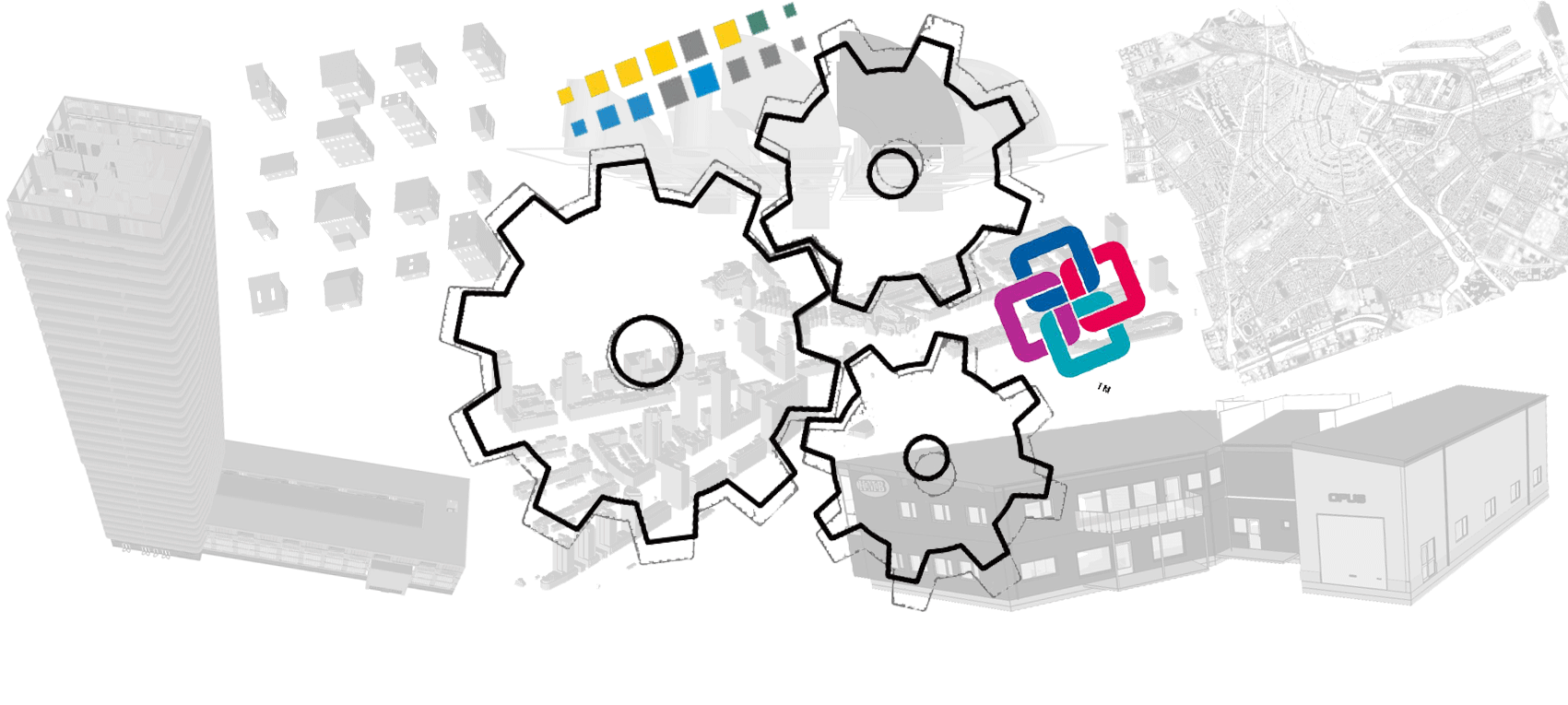
Reference study on software support for open standards of city and building models
Duration: 2019-2021
Synopsis: The benchmark investigated the available technical solutions to support research and activities related to GeoBIM, through the use of the open standards such as IFC (by buildingSMART) and CityGML (by OGC).
Partners: EuroSDR, TU Delft, Lund University, National University of Singapore, University College London, National Technical University of Athens, ACCA Software.
Funding: ISPRS Scientific Initiatives2019, EuroSDR.
(My) role in the project: Contribution to investigation on CityGML datasets and software tools, dissemination.
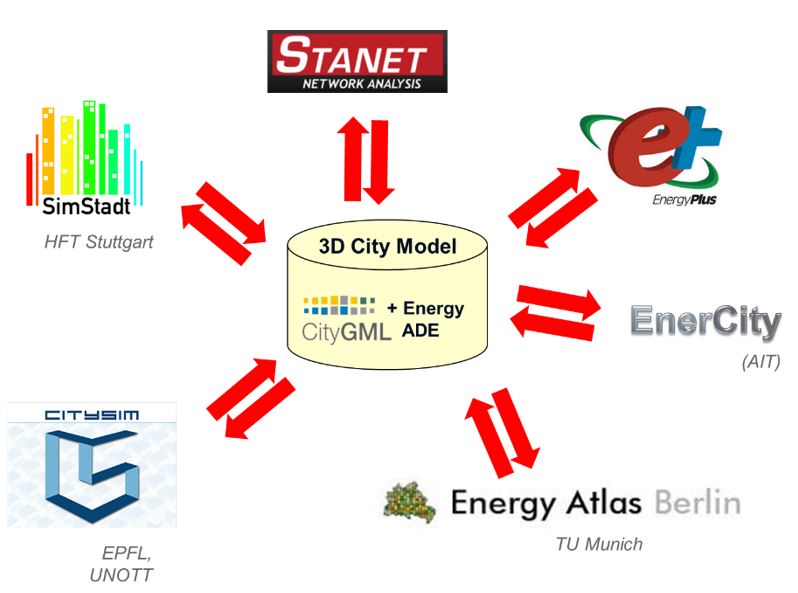
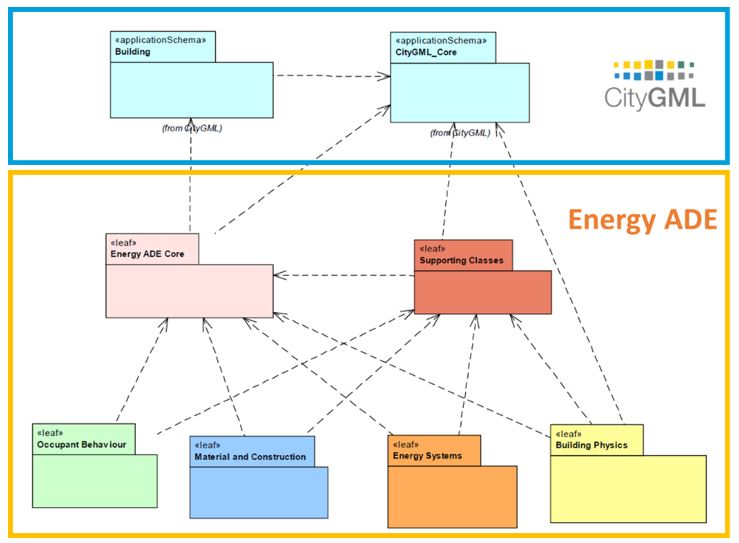
CityGML Application Domain Extension for energy-related applications
Duration: 2014-2018
Synopsis: Developers of urban energy tools have created their own tailor-made data-models, while municipalities and other urban information data administrators have their own database structure to collect and manage urban information. As such, these models exist without interoperability and exchange possibilities between the stakeholders, tools and expert fields. The CityGML Energy ADE aims to extend CityGML in order to model and store all relevant energy-related data for space heating and cooling simulation and audits, building occupancy modelling, energy system modelling, solar energy analysis, etc. It deals with different data qualities, levels of details and urban energy models complexities.
Partners: Special Interest Group 3D (SIG3D), HFT Stuttgart, TU München, Karlsruhe Institute of Technology, TU Delft, European Institute for Energy Research, RWTH Aachen University / E.ON Energy Research Center, Centre Scientifique et Technique du Batiment, Electricité de France, DedaGroup, Ecole Polytechnique Fédérale de Lausanne, ETH Zürich, Laurence Berkeley Laboratory, et al.
Funding: No direct funding, but voluntary participation funded by means of other projects.
(My) role in the project: Active member of the development team, dissemination, training.
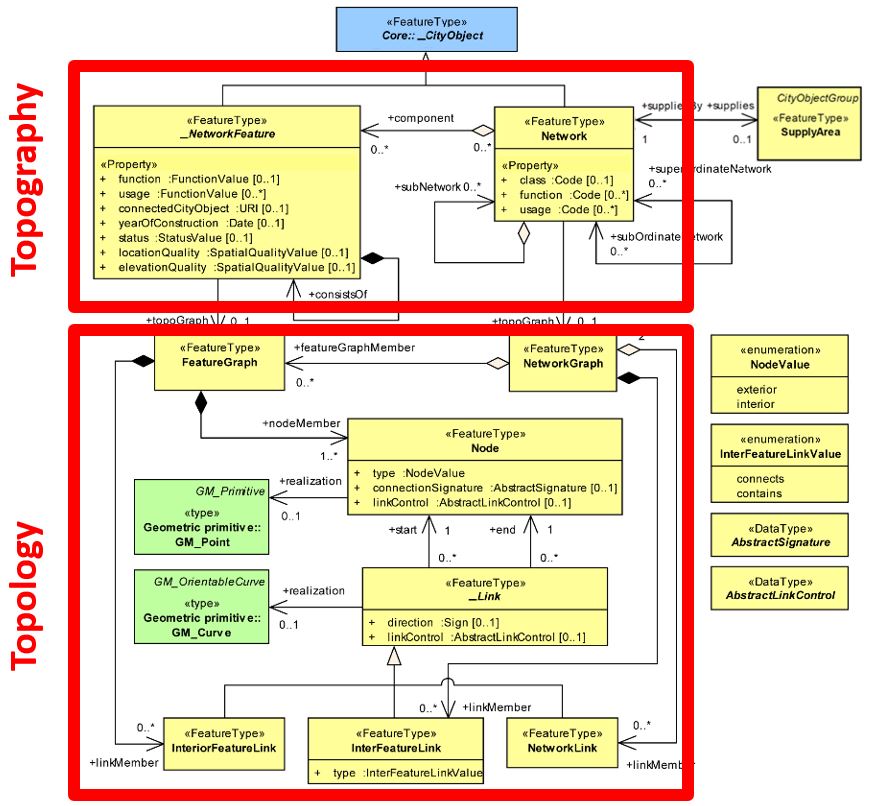
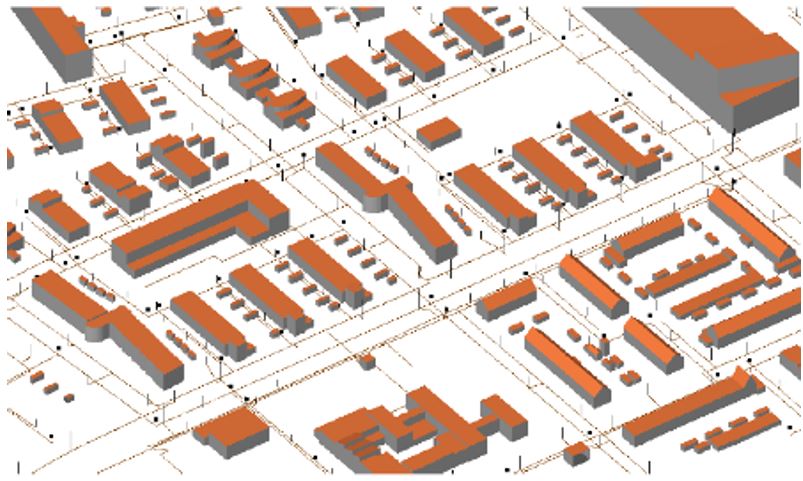
CityGML Application Domain Extension for utility networks
Duration: 2015-2020
Synopsis: The Utility Network ADE extends the international standard CityGML offering a general, harmonised data model for the modelling of any utility network in semantic 3D city models. The Utility Network ADE defines a topological network model facilitating sophisticated analyses and simulations on utility networks and supplying infrastructures. Included are, among others, network hierarchies of arbitrary depth, nesting of network components, and modelling of multi-modal networks. Furthermore, it allows for representing the network components as 3D topographic city objects.
Partners: Special Interest Group 3D (SIG3D), TU München, Karlsruhe Institute of Technology, TU Delft, Austrian Institute of Technology, Ecole Polytechnique Fédérale de Lausanne, et al.
Funding: No direct funding, but voluntary participation funded by means of other projects.
(My) role in the project: Active member of the development team, dissemination, training.
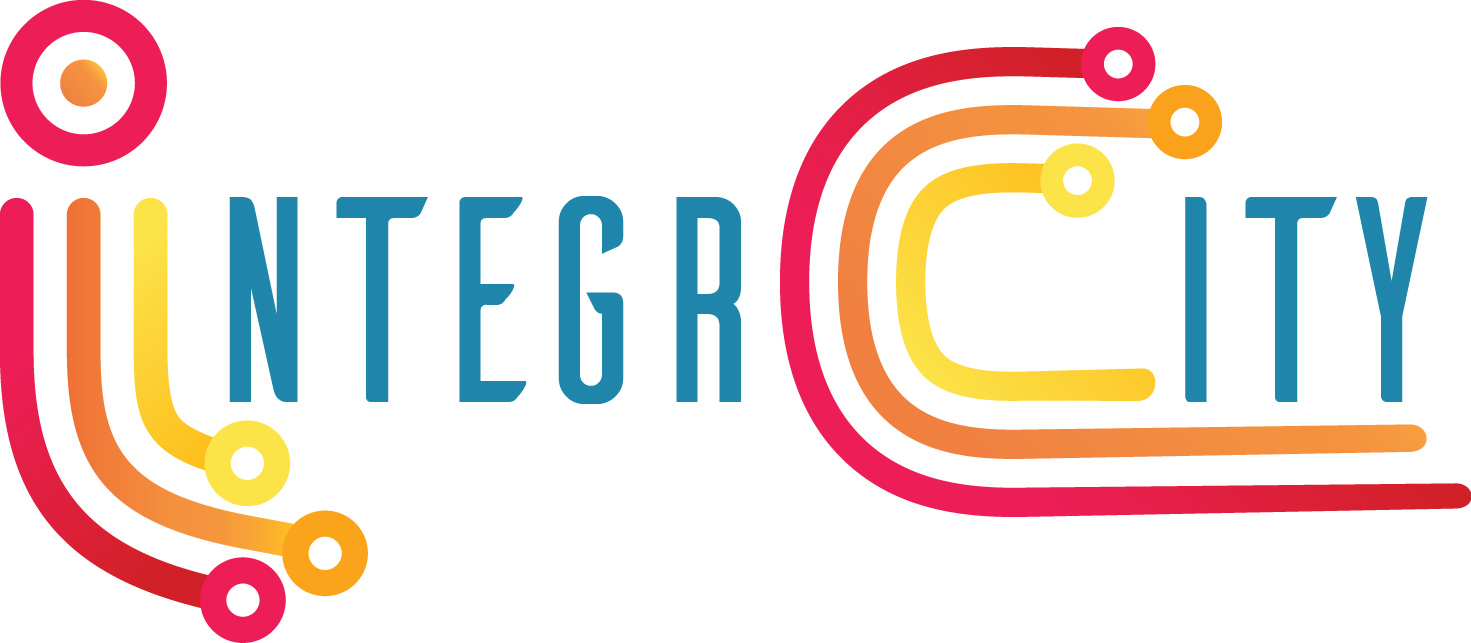

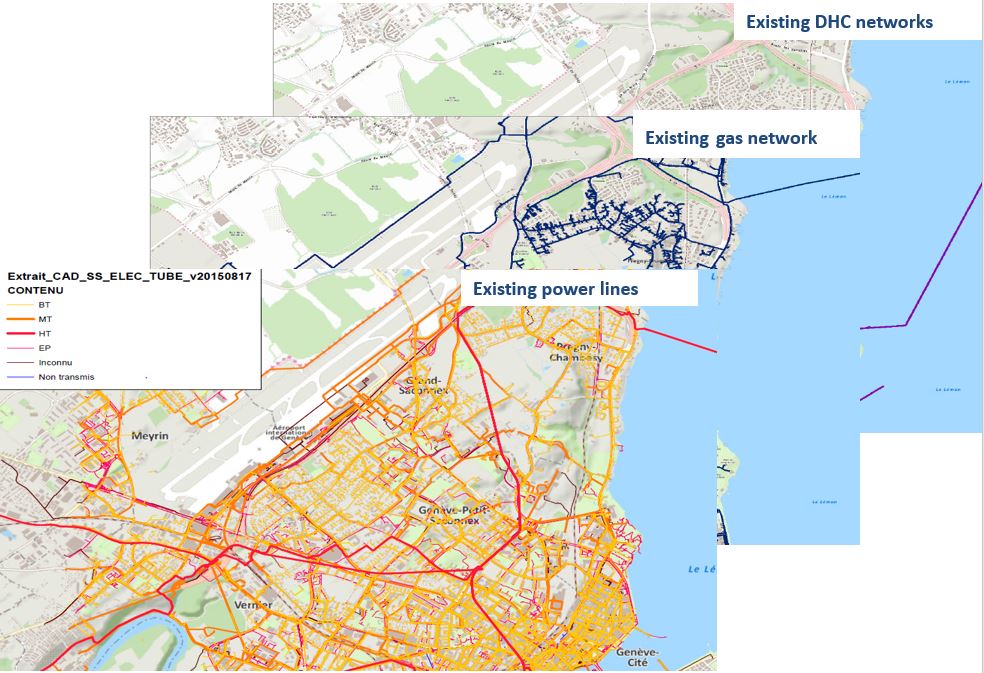
Decision-support environment for planning and integrating multi-energy networks and low-carbon resources in cities
Duration: 2016-2019
Synopsis: Nowadays, energy supply networks in cities – natural gas, electricity and heating/cooling – are almost always planned and operated separately from each other. This “silo-like” approach prevents energy utilities and city planners from: a) Identifying synergies opportunities among the networks, as to increase reliability and robustness of energy supply; b) Optimally planning heavy infrastructure investments, thus taking into account future energy demand evolutions while avoiding oversizing. IntegrCiTy project’s overall aim is to foster energy networks interoperability either in existing or future urban infrastructures by developing a dedicated decision-support tool, that shall be applied and tested/validated in three Swiss and Swedish cities (Geneva, Vevey and Stockholm). All three cities are modelled in CityGML.
Partners: École polytechnique fédérale de Lausanne, AIT Austrian Institute of Technology, AEE, Ville de Vevey, HES-SO Valais-Wallis, KTH Royal Institute of Technology, Centre de Recherches Energétiques et Municipales, Romande Energie SA, Hoval G.m.b.H., Europe Power Solution AB, Office Cantonal de l’Energie, Veolia Sverige AB, Services Industriels de Genève, Holdigaz SA, Riksbyggen, ElectriCity, City of Stockholm.
Funding: ERA-NET Cofund Smart Cities and Communities (FFG).
(My) role in the project: Contribution to project development and writing. Work Package Leader (WP2 “Enabling and integrating a common IT structure”). Further development and adaptation of the Energy ADE and Utility Network ADE, their implementation as extensions of the 3DCityDB. Development and implementation of a Scenario ADE.
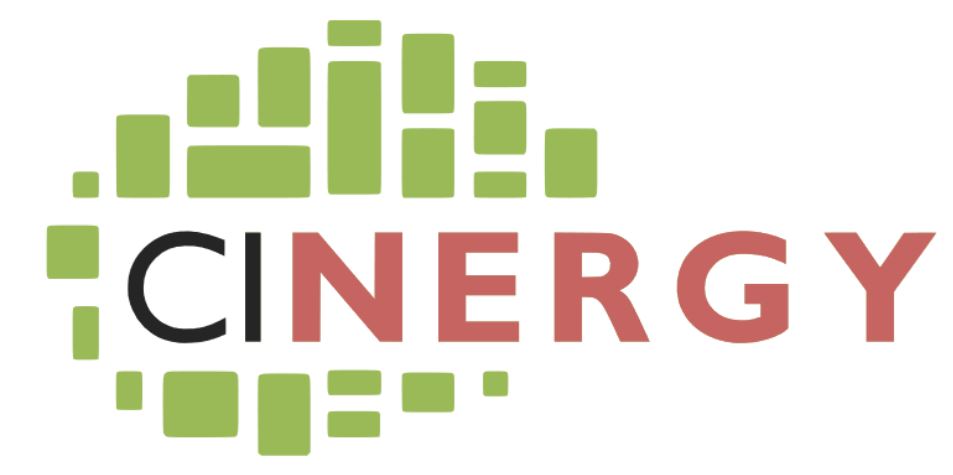
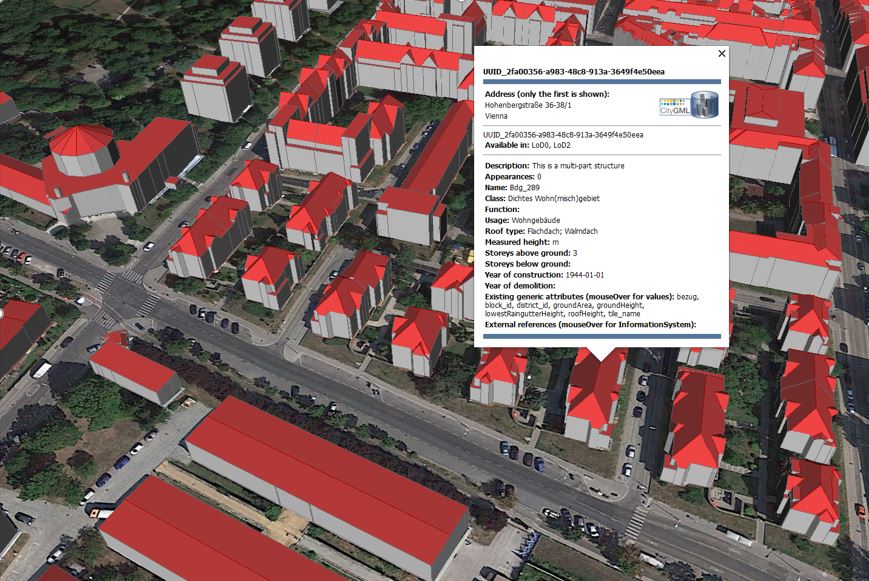
Smart cities with sustainable energy systems
Duration: 2013-2017
Synopsis: The project is a Marie Curie Initial Training Network in the FP7 of the European commission. As such, it aims to provide high level training to young researchers in the field of smart cities, and to develop urban decision making and operational optimization software tools to minimize non-renewable energy use in cities.
Partners: Hochschule für Technik Stuttgart, AIT, Ecole Polytechnique Federal de Lausanne, Électricité de France/European Institute for Energy Research, Integrated Environmental Solutions, University of Nottingham, Politecnico di Torino, SIEMENS, University College Dublin.
Funding: FP7 Marie Curie Initial Training Network (ITN).
(My) role in the project: Marie Skłodowska-Curie Experienced Researcher (Post-Doc) fellow, coordinator of the project-related activities in Austria. Assistance in supervision of the 11 PhD students in the projects. Specific research topic: “An integrated system for urban energy simulations”. Generation and semantic enrichment of the semantic 3D city models of Vienna and Geneva.
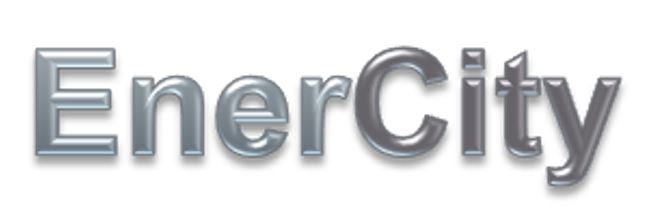
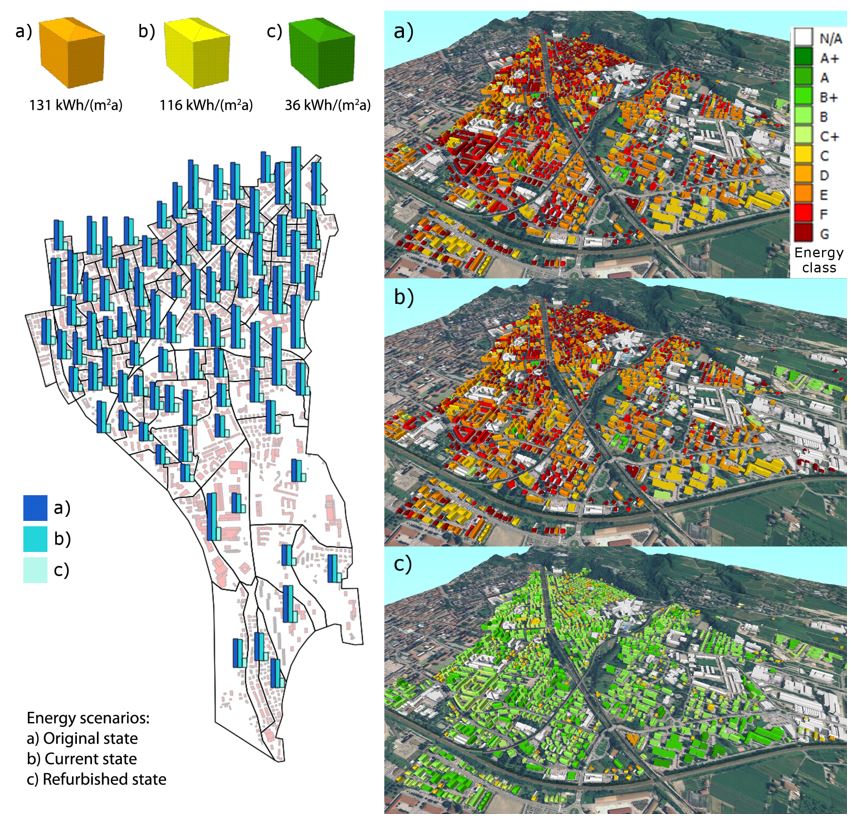
EnerCity
Duration: 2013-(2014 @ AIT)
Synopsis: The goal of the EnerCity project is the development of a tool for energy-planning that addresses decision-makers for the city of Trento. More specifically, the project focuses on the integration of energy-related indicators for buildings within a 3D city model. These indicators are dependent on a number of geometric, semantic and topological characteristics obtained by the 3D city model and other data sources. Such indicators are aggregable, allowing also for a more general view, depending on the hierarchy level of the decision-maker. Test-case is the city of Trento.
Partners: FBK, TU München (Germany).
Funding: FBK internal funding (Mobility project).
(My) role in the project: Project writing and main beneficiary, visiting researcher at TU Munich.
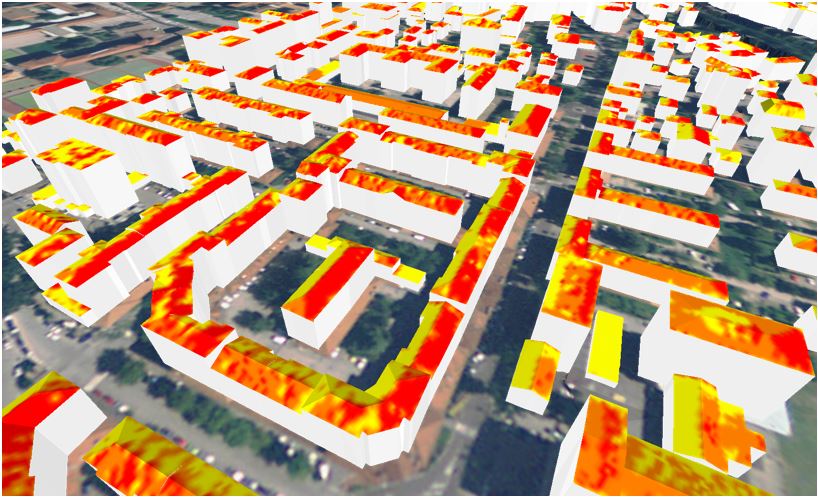
Solar potential of building roofs
Duration: 2012-2014
Synopsis: 3D city and landscape models are used to estimate the incoming solar radiation and evaluate the quality of the roofs as possible location of photovoltaic panels.
Partners: FBK, MPA Solution (Italy).
Funding: Alpine Space Program, Autonomous Province of Trento.
(My) role in the project: Spatial and non-spatial data integration and analysis, 3D city modelling, solar analysis.


Duration: 2011-2014
Synopsis: The project aims at the multi-sensor and multi-resolution 3D documentation of the UNESCO Maya site of Copan (Honduras) and at the realization of a 3D GIS tool to visualise and query multi-resolution, semantically enriched archaeological 3D models online.
Partners: FBK, University of New Mexico (USA), ETH Zürich (Switzerland), University of California, Merced (USA), Graphitech (Italy), German Archaeological Institute (DAI), University of Heidelberg (Germany).
Funding: German Federal Ministry of Education and Research.
(My) role in the project: Spatial and non-spatial data integration, conceptual data modelling, database design and implementation, 3D GIS.

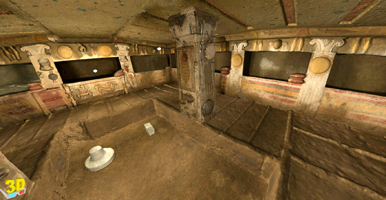
Duration: 2009-2014
Synopsis: The project aims to reproduce precise digital replicas of some of the Etruscan tombs located in different necropolis using reality-based 3D surveying methodologies, and to present them by means of proper 3D visualisation tools.
Partners: FBK, Historia, Soprintendenza per i Beni Archeologici dell’Etruria Meridionale, Graphitech, NoReal, Art-Test, CINECA.
Funding: Historia.
(My) role in the project: 3D surveying, 3D virtual tour programming.
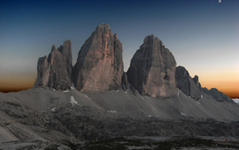

Tre Cime di Lavaredo (Drei Zinnen/Three Peaks)
Duration: 2009-2011
Synopsis: The project aims at producing an accurate, detailed and photo-realistic 3D model of the 3 Cime di Lavaredo (Drei Zinnen-Three Peaks) in the Dolomites, Italy. The model is used for geological analyses and visualisation purposes.
Partners: FBK, University of Pavia (Italy), University of Padova (Italy), Helica, Gexcel, Codevintec and ProtoCube.
Funding: FBK and University of Pavia (Italy).
(My) role in the project: 3D surveying, 3D modelling, data processing.
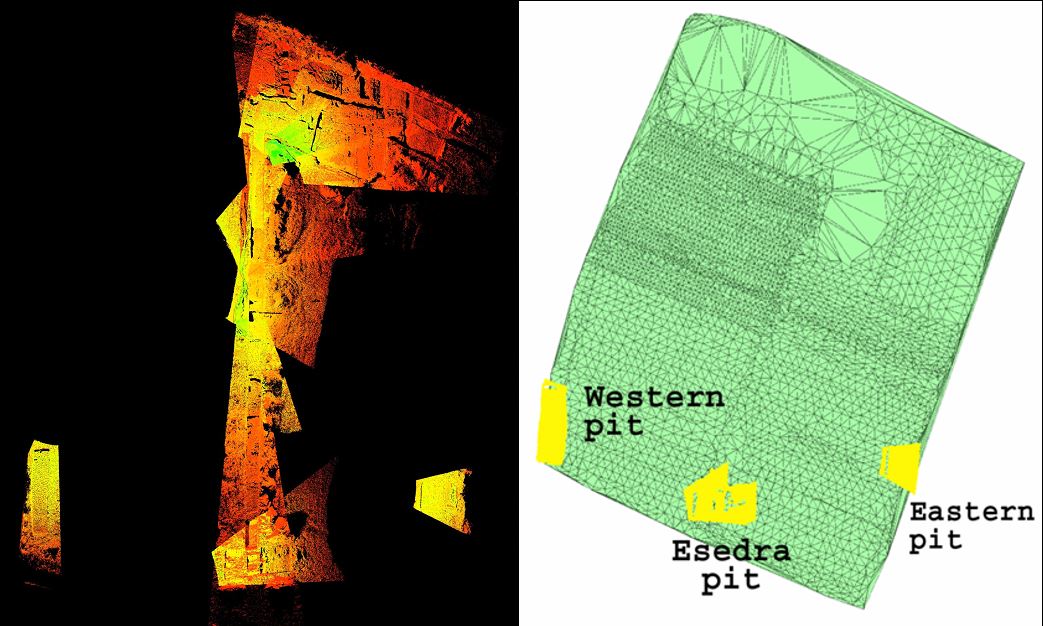
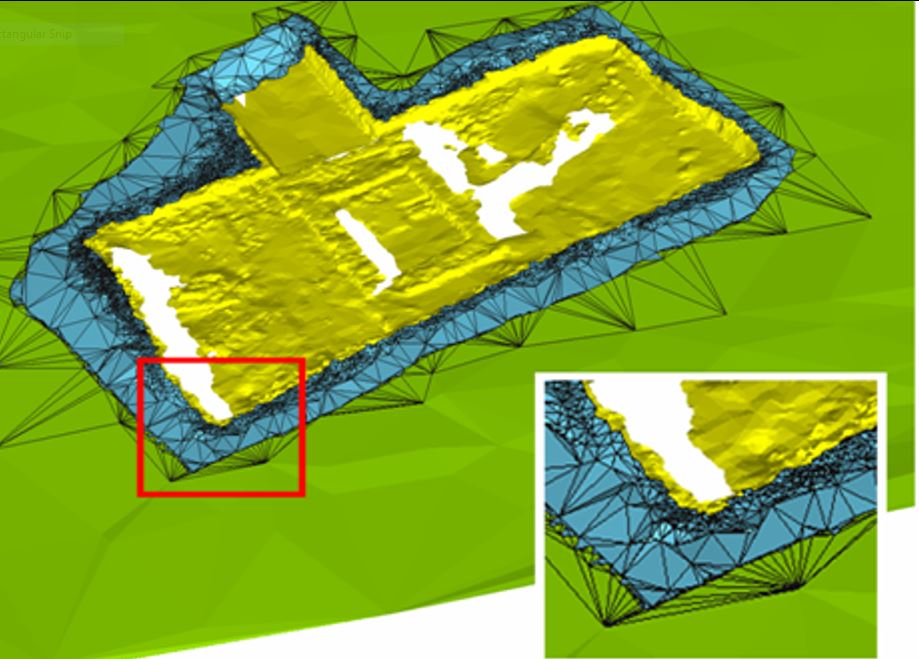
3D surveying of the Terme Neroniane archaeological site in Montegrotto Terme
Duration: 2006-2008
Synopsis: The project aims at generating an accurate, detailed and photo-realistic 3D model of the archaeological site of the Terme Neroniane in Montegrotto Terme (Padova), Italy, by means of integration of GPS, terrestrial laser scanning and traditional surveying techniques.
Partners: University of Padova.
Funding: University of Padova.
(My) role in the project: 3D surveying, 3D modelling, data integration.